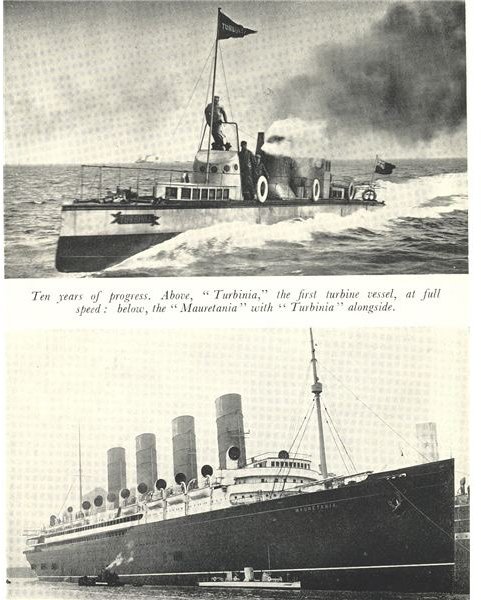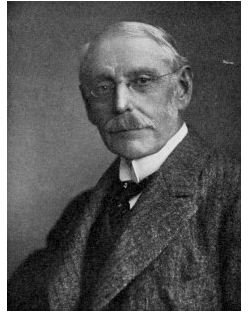Great Engineers - Chrales Parsons - Steam Turbine Inventor
Childhood and Studies
Charles Algernon Parsons was born in 1854 in London, the fourth son of the 3rd Earl of Rosse, who himself was a distinguished engineer and astronomer. As a boy, Charles was tutored privately and was always exceptionally bright. When he was twelve, he and his three brothers built a four-horsepower steam carriage that was reported to travel at ten mph. Later, he studied at Trinity College in Dublin then moved to St. John’s College, Cambridge. In 1877 he obtained a bachelor’s degree in mathematics.
Early Success
Like many newly minted engineers, Parson took a job with an established engineering firm after graduation, going to work for W.G. Armstrong & Co., Elswick. There, he was allowed to design and build his own steam engine, provided that he pay for the materials and labor. While this engine was not a success, he later researched rocket powered torpedoes at the firm Kitson’s of Leeds. These were not successful either, but both projects gave Parsons useful information for developing his steam turbine. In 1884 he went into partnership with a company in Gateshead that wanted a steam engine for the purpose of driving a dynamo (generator). The first steam turbine was built in 1884 and rapidly caught on. Steam turbines extract thermal energy from pressurized steam and then convert it to mechanical work.
Own Company
In 1889 Parsons, whose invention was bringing him some degree of fame, started up his own engineering firm in Heaton, Newcastle-Upon-Tyne that made steam turbines, searchlight reflectors, dynamos, and other electrical equipment. Parsons’ first turbine was not very efficient, and only generated 7.5 kW, but rapid technological improvements led to a megawatt turbine built in 1899 for a plant in Germany.
Marine Vessel Turbines
At the same time, Parsons was developing steam turbines to power marine vessels. The Turbinia was 100 feet long and 9 feet wide with a displacement of 44.5 tons. The first turbine was a single radial flow model driving a single shaft at 2,400 rpm. Parsons had calculated a speed of 34.5 knots, but the Turbinia wouldn’t even do 20 knots. Parsons figured out that the high rotational speeds of the propellers, 18,000 rpm, caused water pressure to decrease, forming bubbles. So most of the power was making bubbles rather than pushing the boat.
He overcame this problem ingeniously, by changing the radial flow turbine with three parallel flow turbines. One had high pressure, one medium, and one low pressure, and each reused the same steam in turn. Each of these turbines drove a separate shaft attached to three triple-bladed screws (for a total of nine propellers). When the steam pressure was 157 psi, the central shaft turned at 2,000 rpm, and the side shafts rotated at 2,230 rpm. With this configuration, the Turbinia did indeed reach 34.5 knots.
Turbinia - a Shocking Surprise
Charles Parsons wasn’t just “book smart,” but he knew when to crash a party. In 1897, during the Naval Review on the occasion of Queen Victoria’s 60th anniversary as monarch, Parsons made the Turbinia a part of the review. Unbeknownst to all but two or three people, he fired up the vessel and roared out ahead of the other naval ships, causing people to gasp with shock at how fast it went. And the Turbinia was in the company of 165 of the finest ships from the finest armada the world had ever seen, so its feat was even more impressive.
His gamble paid off. One year later, the admiralty ordered a turbine driven destroyer to be called the HMS Viper. Soon, turbines were adopted on a mass scale for Navy ships and ocean liners. The HMS Dreadnought, the Mauretania, and the Titanic were all driven by Parsons’ turbines.

Parsons Legacy
Parsons amassed many honors in his time, including being made Fellow of the Royal Society in 1898, receiving the Royal Society’s Rumford Medal in 1902. He was knighted in 1911. Charles Algernon Parsons died in 1931, but the Turbinia is still housed in a gallery at the Discovery Museum in Newcastle. Parsons’ company still exists in Newcastle as part of German conglomerate Siemens. Birr Castle, his ancestral home in Ireland is now a museum honoring the contribution the Parsons family made to science and engineering.

References
References:
https://www.1911encyclopedia.org/Sir_Charles_Algernon_Parsons
https://www.statemaster.com/encyclopedia/Charles-Algernon-Parsons
https://www.robinsonlibrary.com/technology/engineering/biography/parsons.htm
https://www.btinternet.com/~philipr/Parsons.htm
https://www.britannica.com/EBchecked/topic/444719/Sir-Charles-Algernon-Parsons
